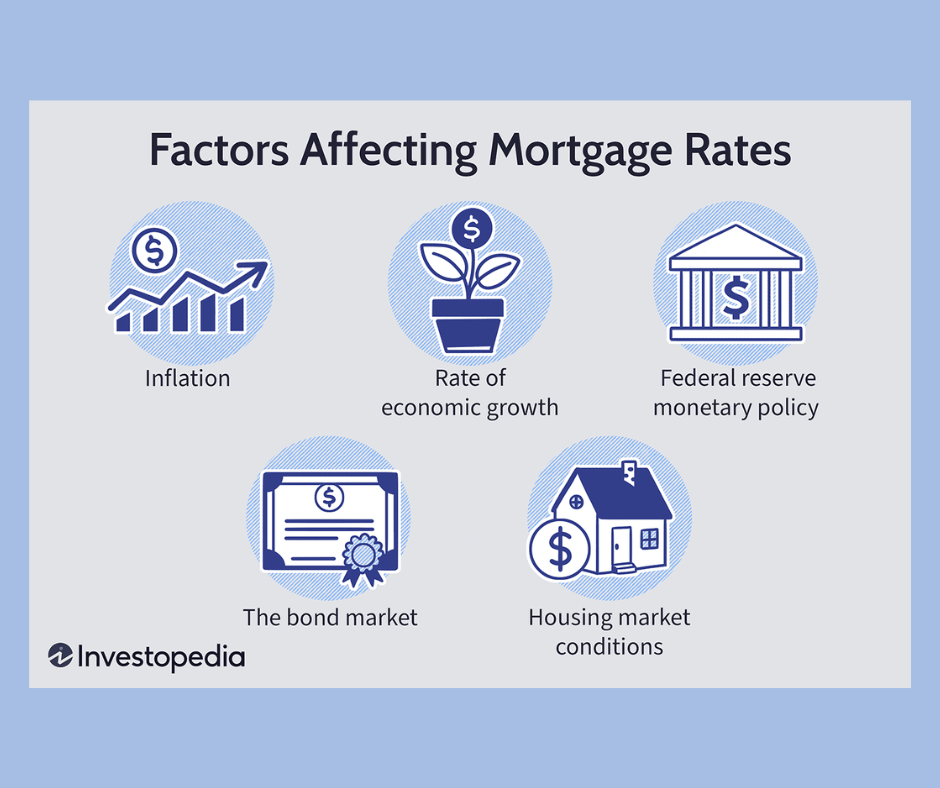🗺️ Why Mortgage Rates Vary by State
📊 What Goes Into a Mortgage Rate?
While national headlines talk about “average” mortgage rates, what you get depends on a mix of economic indicators and borrower risk. Here’s what drives rates:
Benchmark rates: Most lenders track the 10-year Treasury yield as a base.
Credit score & debt-to-income ratio: The better your profile, the better your rate.
Loan terms & type: FHA, VA, jumbo, and conventional all price differently.
Lender margins: Individual lenders add in their own profit margins, overhead, and risk buffer.
Market demand: Mortgage-backed security investors help steer daily rate shifts.
These factors explain why two buyers in the same week—but different zip codes—may see different offers for the same type of loan.
🌎 Why Do Rates Vary by State?
Today’s 🔗 Investopedia’s Zillow data shows:
Lowest averages (≈ 6.69% – 6.85%)
States like New York, California, New Jersey, North Carolina, Minnesota, Pennsylvania
Highest averages (≈ 6.93% – 7.00%)
West Virginia, Alaska, Washington D.C., Wyoming, Kansas, Mississippi, Missouri, New Mexico, North Dakota, Oklahoma
These numbers shift daily, but the patterns remain surprisingly consistent.
🧭 The Key Drivers
🏛️ Foreclosure Laws – Judicial foreclosure states (where court approval is required) often come with higher legal and timeline costs—leading to higher interest rates.
💼 Lender Competition – More lenders in competitive housing markets shrink margins and rates. Sparse competition? Higher prices.
📜 Local Fees & Regulations – State-specific transfer taxes, license fees, and title insurance vary—and get passed on to borrowers.
💳 Borrower Credit Quality – Stronger average credit health leads to lower rates; weaker credit profiles push state averages upward.
💰 Loan Size & Market Appeal – In high-balance markets (e.g., California), mortgages are larger, and investor demand for big loans can bring rates down slightly.
🐼 What It Means for You
Living in a higher-rate state doesn’t mean you’re stuck paying more. Here’s how to tilt the scales:
Compare quotes – Even lenders in your ZIP can differ. Let them bid for your business.
Polish your credit – A small credit score boost could cut hundreds off your monthly payment.
Pick the right program – FHA, VA, conventional, and jumbo loans don’t all price the same.
Lock smart – Watch the bond market and lock in when mortgage rates dip.
If you're buying in a high-rate area, let’s get strategic. I’ll help you compare lenders, level up your credit, and choose the best refinancing or purchasing approach—no matter where your home is.



